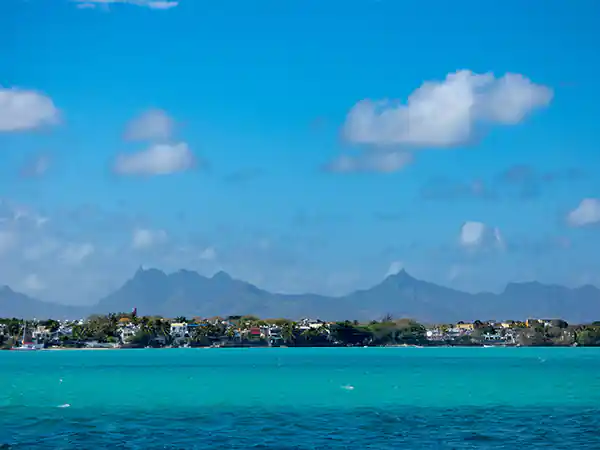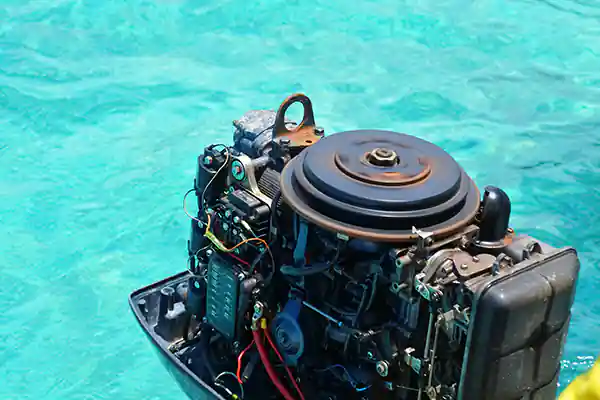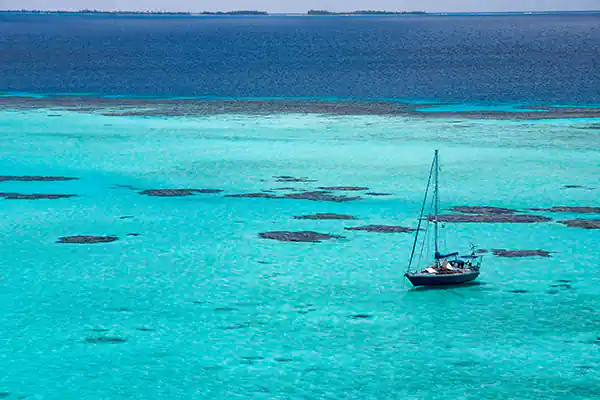Boat maintenance in tropical climates: Tips for smooth sailing
Imagine yourself at the helm of your boat, the sun’s warm embrace and the azure waters stretching as far as the eye can see. Tropical and equatorial climates beckon, promising unforgettable voyages filled with breathtaking scenery and endless adventures. While these paradises are every sailor’s dream, they also bring a set of unique challenges that can put your vessel’s well-being at risk.
From the relentless tropical sun to the corrosive effects of saltwater, it’s crucial to understand the nuances of boat maintenance in these lower latitudes. In this comprehensive guide, we’ll delve into the specifics of maintaining your boat in tropical and equatorial climates, providing you with the knowledge and strategies to ensure your journeys remain idyllic and trouble-free.
Understanding the tropical environment
Tropical climates are known for their warm waters and postcard-perfect settings. Yet, beneath this picturesque exterior, they pose unique challenges to your boat’s well-being.
With soaring temperatures, unrelenting humidity, and scorching UV radiation, the tropical sun can be both your friend and foe. These factors altogether can lead to increased wear and tear on various components, affecting everything from your engine’s performance to the longevity of paints and coatings. The constant humidity provides an ideal breeding ground for mold and marine growth, while the intense UV radiation can cause sun damage and discoloration.
Let’s explore essential considerations to ensure your boat remains seaworthy and your journeys memorable while sailing in lower latitudes.

Hull maintenance in warmer climates
The hull of your boat is its shell and shield. It takes the brunt of the tropical environment, both above and below the waterline.
Water density can often be slightly lower in the tropics, both because of higher temperatures and higher rainfall. As a result, your boat may sit lower on the water than usual. In addition, if the boat is loaded for long-distance cruising, the water level may be higher than intended. Consider raising your boat’s waterline accordingly whenever you haul it out.
Underneath the waterline, the hull becomes a haven for barnacles and algae. Marine growth can quickly take hold in warm, nutrient-rich waters. Selecting an efficient anti-fouling solution is vital. Paints are the usual suspects designed to repel marine growth, but many other systems exist to control biofouling on your hull. In addition to preventive measures, regularly cleaning the hull is important to prevent these unwelcome passengers. A clean hull not only enhances your boat’s performance but also improves fuel efficiency.
In tropical climates, investing in the right paints and coatings is crucial, even above the waterline. The constant exposure to saltwater and sunlight can be tough on your topsides and deck. The sun’s powerful UV rays can damage your boat’s gelcoat, leading to fading and degradation. Consider using marine-specific, UV-resistant paints and protective coatings. These not only protect your boat from the elements but also enhance its aesthetic appeal.
If inspecting your hull reveals any sign of damage, such as cracks, blisters, or peeling paint, address them promptly. Higher temperatures will likely cause the issue to worsen more quickly than you might think.
Dealing with corrosion
Corrosion is a relentless enemy in tropical waters due to the presence of saltwater and the pervasive high humidity. As a boat owner, you’ll find corrosion particularly challenging to combat. The key to battling corrosion lies in proactive measures.
Due to the high temperatures and the frequent trade winds, spray will quickly dry out, leading to salt build-up in many nooks and crannies. Regular freshwater rinses are therefore crucial. A good rinse will wash away salt residue and reduce the chances of corrosion taking hold.
In many cases, to safeguard your boat’s metal components, it can help to apply anti-corrosion coatings. These protective shields create a barrier between the metal and the corrosive elements, reducing the risk of oxidation and deterioration.
For steel parts, coats of paint are as essential as ever. And any sign of rust should be acted upon immediately. Spraying a penetrating fluid (such as WD-40) on mechanical items will not only lubricate them, but will also displace moisture and prevent rust. Stainless items can be polished, although some, such as riggingAll the spars (masts, booms, yards), cables and ropes needed to hold and maneuver the sails. More turnbuckles and shroud-terminal junctions, should also be sprayed.
Finally, monitor your anodes closely to ensure neither your hull (if metallic), your shafts, your propellers, your through-hulls, nor your engines will be sacrificed instead.
By adopting a proactive stance against corrosion, you’ll not only extend the life of your boat’s essential parts but also ensure that your vessel maintains its structural integrity, allowing you to navigate the tropical waters with peace of mind and confidence.

Engine and mechanical maintenance
Your boat’s engine and mechanical systems are the heart and muscle of your vessel. In tropical climates, they work under additional stress due to higher ambient temperatures. Regular maintenance is key, including belt checks, filter replacements, seal inspections, and proper lubrication. Monitor fuel consumption and engine performance, as increased heat can lead to overheating or reduced efficiency. Regular maintenance checks, including changing fuel and oil filters, can help ensure your engine runs smoothly.
Due to the ambient moisture, bacteria can quickly develop in your fuel systems. To avoid clogged filters and fuel starvation on your engine, consider treating your tanks with biocide additives. If you are unsure about the quality of the fuel you are taking onboard, filter it before it enters your tanks!
Because their maintenance is less demanding, perhaps it’s an opportunity to look into electrical outboards for your tender or dinghy.
Electronics and electrical systems
Electronics and electrical systems are the brains of your boat, but they are also very sensitive to humidity and heat. Invest in waterproof components and conduct regular inspections to ensure they function flawlessly. Protect your digital gear from the elements. And whenever possible, shield any electronics from direct sunlight to prevent overheating. Electrical connectors, especially battery terminals, can also be sprayed to remove any moisture.
Protect your boat’s upholstery and sails
Protecting your sails is essential to make them last and perform over any length of time. Begin by storing your sails properly when not in use. Invest in UV-resistant sail covers to shield them from the sun’s rays and harsh tropical conditions. The mainsail should be stowed in a closed lazy-bag if you have one, and the furling sails should have an anti-UV sacrificial strip or a cover you install whenever not sailing.
Regularly inspect your sails for signs of wear and tear, including chafing, stitching damage, or UV degradation. Timely repairs and maintenance will ensure that your sails remain in prime condition.
The intense sun close to the equator can also take a toll on your boat’s upholstery. Invest in high-quality UV-resistant covers for your seats and cushions, and consider using specialized fabric protectors, which add an extra layer of defense against sun and moisture damage.
Regular cleaning and maintenance of both your sails and your upholstery will safeguard your boat’s comfort and its ability to navigate the tropical waters smoothly.
Mold and mildew prevention
The constant humidity in tropical climates can create the perfect breeding ground for mold and mildew. They can wreak havoc aboard, whether in closed storage compartments or during periods of unattended storage.
The approach to combating mold development is to : clean to eliminate salt residues, store items when perfectly dry, ensure proper ventilation to avoid stagnant, humid air, use dehumidifiers if needed, and routinely clean mold-prone areas. This simple regimen will help you keep the invasion at bay.
As a bonus, installing vents and fans will not only be of great help in combating mold buildup. Maintaining a good air circulation and reducing humidity will also make it more comfortable below deck.
Severe weather and long-term storage
Tropical climates aren’t just about sunny skies. Because higher temperatures mean more energy in the environment, they can bring sudden, severe weather changes, including tropical storms. Always stay informed about the weather forecast and have a well-thought-out plan in case you encounter adverse conditions. Ensure your boat is equipped with proper anchoring and storm equipment in good working condition.
As a rule of thumb, in both hemispheres, cyclone or hurricane season is mostly during the summer and fall months. For this reason, many boaters, sailors and cruisers tend to favor the winter and spring. As a result, storing the boat for many months is a popular solution. When leaving a boat in a sun-baked marina or yard during the sultry summer season, the tips discussed here are as critical as ever!

Setting sail with confidence in tropical waters
Maintaining a boat in tropical climates requires a proactive approach. By understanding the unique challenges posed by these environments and implementing the tips we’ve provided, you can navigate these warm waters with confidence just like we did. Your boat will stay in prime condition, ensuring your voyages in these tropical paradises are truly unforgettable.
Share this comprehensive guide with your fellow boaters and yachtsmen. Boat maintenance in tropical climates is a common challenge, and the more we learn from each other, the smoother our sailing will be. Don’t hesitate to reach out to experts for personalized advice on boat maintenance in these captivating regions. Your boat, and your adventures, will thank you for it.
Subscribe to our monthly newsletter for free:
Subscribe to our monthly newsletter to receive tips on keeping your boat in good health.
